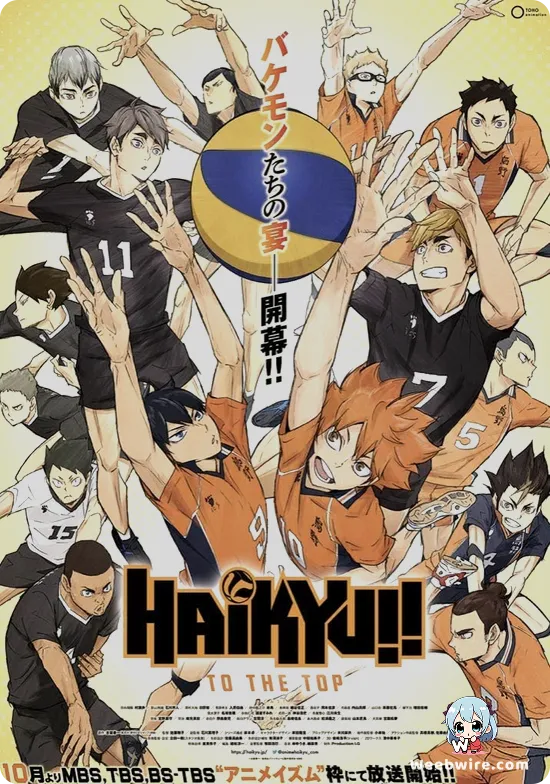InuYasha's Enduring Legacy: Unearthing Unseen Depths and Production Revelations

For over two decades, Rumiko Takahashi's monumental creation, InuYasha, has enthralled a global audience, masterfully blending feudal Japanese mystique, unforgettable characters, and a timeless saga of affection, sorrow, and destiny. While legions of fans are well-versed in the epic journeys of Kagome Higurashi and the enigmatic half-demon InuYasha, a treasure trove of lesser-known facts and intriguing behind-the-scenes details exists, enriching the series' profound depth. These revelations illuminate the intricate layers of its genesis, from the nuanced origins of its protagonists to crucial production insights.
The Nuances of Character Development
A cornerstone of InuYasha's appeal lies in the subtle yet powerful character development and the rich symbolism woven throughout its fantastical world. Consider the iconic 'Osuwari!' (Sit!) command, which comically sends InuYasha tumbling. Far from a mere running gag, it profoundly symbolizes Kagome's unique authority and profound influence over the impetuous half-demon. This command underscores their intertwined destinies and the singular bond that allows her to temper his volatile nature. Furthermore, InuYasha's poignant human transformation during the new moon is a deliberate narrative choice by Takahashi, designed to explore his inherent vulnerability and the ceaseless internal conflict with his demonic heritage a deeply resonant and recurring theme for viewers.
Sesshomaru, InuYasha's full-demon elder brother, undergoes arguably the series' most compelling metamorphosis. Initially introduced as a frigid, ruthless adversary, his arc is defined by a gradual embrace of compassion, significantly spurred by his unexpected connection with the human orphan, Rin. His celestial blade, Tenseiga, incapable of harming the living but possessing the power to restore life, directly mirrors his evolving essence. It compels him to shed his immense pride and discover a different, more profound form of strength. This transformation, from a purely power-driven entity to a fiercely protective guardian, stands as a testament to Takahashi's masterful, nuanced storytelling, proving that even the most formidable figures can achieve redemption and emotional maturity.
Beyond the central figures, the supporting ensemble also harbors surprising complexities. Miroku, the outwardly lecherous monk, carries the tragic burden of a family curse the devastating Wind Tunnel which inexorably threatens to consume him. This curse is more than a plot device; it serves as a constant, somber reminder of his lineage and his desperate, singular quest to vanquish Naraku, adding a poignant depth beneath his often-comedic exploits. Similarly, Sango, the formidable demon slayer, is propelled by an unwavering loyalty to her family and her devastated village, wielding her colossal Hiraikotsu with a deadly grace. Her unyielding resolve in the face of profound loss powerfully underscores the series' poignant exploration of grief and indomitable resilience.
Behind the Scenes: Production Insights
From a production lens, InuYasha's journey to the small screen is equally captivating. While Sunrise is universally recognized as the principal animation studio bringing the manga to vibrant life, a lesser-known yet significant detail is the animation assistance provided by Kyoto Animation during the series' formative episodes. Before its ascent to international acclaim for its distinctive artistry and emotionally rich productions like K-On! and Violet Evergarden, Kyoto Animation contributed crucial in-between and key animation for various InuYasha episodes. This early collaboration highlights the interconnected tapestry of the anime industry's history and offers a rare glimpse into the foundational work of a studio that would later redefine animation quality and narrative depth. It profoundly demonstrates the widespread talent that permeated the industry even in supporting capacities, significantly contributing to the overall visual excellence of a long-running series such as InuYasha.

Rumiko Takahashi's Creative Process and Symbolic Names
Rumiko Takahashi herself has offered invaluable insights into her creative methodology. Unlike some manga artists who meticulously blueprint every detail, Takahashi frequently allowed the narrative and characters to evolve organically. She maintained a broad vision for the overarching story but explored character relationships and plot twists dynamically as she progressed, a process that undeniably contributed to the series' vibrant and often unpredictable nature. The manga's serialization spanned over a decade, culminating in an impressive 56 volumes, and the subsequent anime adaptation, including InuYasha: The Final Act, remarkably covered the entirety of her extensive body of work a rare and commendable achievement for a series of such epic scope.
Even the characters' names are imbued with symbolic significance. 'InuYasha' translates directly to 'dog demon,' an immediate reflection of his mixed heritage. 'Kagome' subtly references a traditional Japanese woven basket pattern, occasionally forming a hexagram, hinting at her profound spiritual power and her pivotal role in containing the fragmented Shikon Jewel. 'Sesshomaru' translates to 'killer of life,' a name that perfectly encapsulated his initial, formidable persona before his transformative journey. These linguistic nuances enrich the viewing experience, offering deeper rewards to those who explore the cultural context.
An Enduring Legacy
InuYasha's indelible legacy is unequivocally affirmed, having spawned multiple films, video games, and even a direct sequel series, Yashahime: Princess Half-Demon, which continues the saga through the eyes of the next generation. The series' unparalleled ability to seamlessly interweave action, adventure, comedy, fantasy, and romance with compelling character development and a rich mythological backdrop unequivocally secures its place as a timeless classic within the hallowed halls of anime history. Unearthing these previously hidden facets only deepens one's appreciation for the intricate artistry and masterful storytelling that define InuYasha's enduring, captivating charm.
Credits
InuYasha
Author
Rumiko Takahashi
Cover Art
Rumiko Takahashi
Studio
Sunrise
Publisher
Shogakukan
Producers





